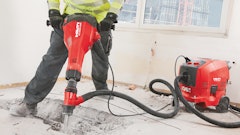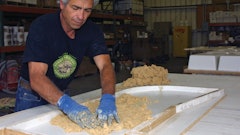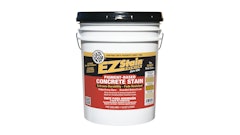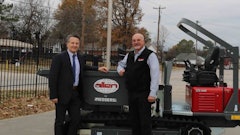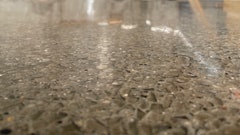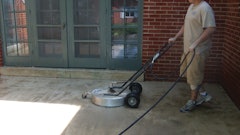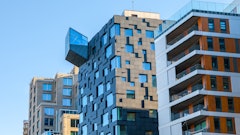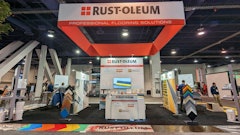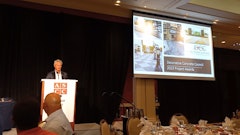
Recently a student of ours commented on various color combinations for stamped and stained concrete and asked us which colors we used most frequently. Reflecting back on many years of different decorative concrete installations, the color green came to mind. Whether it was just a subtle accent of color hardener or a spritz of green acid stain, it occurred to me how much the color green could add to a project.
In modern-day construction, the word "green" takes on an entirely different meaning. Responsible building, especially with concrete, is no longer considered an "in vogue" fringe fashion but rather one of the most important considerations of sustainable design and construction.
Many of us concrete junkies have used recycled materials such as fly ash, ground slag, crushed glass and metal inlays in our quest to create beautiful works of art without even considering the many benefits of green building practices. We are actually in the design phase on the construction of our own home (out of concrete, of course), and I must admit, it has been and will continue to be a learning experience with green in mind.
We are fortunate to have come in contact with Eric Brock and Frank André of Lord Aeck Sargent Architecture in Atlanta, whose firm specializes in sustainable design. As Eric and Frank put it, normally their firm does not get involved with small residential projects. However, they were so intrigued with our ideas using concrete as the primary medium that they wanted to be a part of this unique project. They certainly brought many important considerations to mind that many times are overlooked or not even considered.
Sustainability starts with choosing a site that will have the least impact on the environment - such as using the natural contours of the land and only removing trees if it is absolutely necessary - and then trying to landscape with native trees, shrubs and plant material.
Other considerations at the conceptual phase of our project included radiant flooring, solar, geothermal and a green roof that captures water runoff and recycles it for everyday use such as watering the landscaped areas.
A main component of our construction is the use of a trombe wall, which utilizes concrete's thermal mass properties to capture heat during the day and then release the stored heat, making for a much more energy-efficient environment.
Responsible building Q&A
With green principles being the "in thing" these days, I figured I would ask the experts at Lord Aeck Sargent Architecture a few basic questions about responsible building practices.
Bob Harris: For readers who are not familiar with the term "sustainability," what exactly does this mean?
Lord Aeck Sargent Architecture: The commonly accepted definition, which came from the Brundtland Commission and was later adopted by AIA (American Institute of Architects), is essentially, "Meeting the need of the current population without compromising the ability of future generations to meet their own needs." Using the financial equivalent, sustainability means living off of the earth's interest, which can be done in perpetuity, rather than using up the earth's capital.
BH: What are the main reasons one would choose to design and construct with sustainability in mind?
LASA: The first is ethical responsibility. Buildings use a tremendous amount of resources and produce a great amount of waste. The second is fiscal responsibility and risk management. Buildings can be built to be more efficient (less costly to operate), and few expect the cost of utilities to decrease in the near term.
BH: Does building in this fashion increase or decrease the actual fixed cost of construction?
LASA: It depends on how it's done. You can spend more to add green bells and whistles, or you can optimize the design using state-of-the-shelf technologies and products. Proper building orientation has a big impact on performance yet costs no more than poor orientation.
BH: From an architect's point of view, do you feel the average concrete contractor is even aware of building responsibly?
LASA: Three or four years ago, "no." Now, green design is clearly entering the main stream.
BH: What does the term "LEED certification" mean?
LASA: LEED stands for Leadership in Energy and Environmental Design. LEED is a green building rating system intended to take the esoteric concept of sustainability and break it down into an understandable menu of items that can reduce a building's impact on natural resources.
BH: What does LEED certification offer an architect, contractor or homeowner?
LASA: Ideally, the owner gets a more integrated, more resource-efficient design and construction process resulting in a better project. Owners are coming to see LEED as a sign of quality in addition to environmental responsibility. From the architect and contractors' perspectives, it essentially introduces environmental issues and performance benchmarks into the design and construction process. From a competitive standpoint, more and more architects and contractors are heading toward this type of design and construction for all of the obvious reasons discussed here.
Whether you plan on using the color green in your design or green building practices, you will probably find that either can be a win-win situation. I encourage you to learn more about sustainable construction, and stay tuned in the future for updates on our project.
Bob Harris is the founder and president of the Decorative Concrete Institute, Temple, Ga., which provides hands-on training in architectural concrete. He has personally placed or supervised the placement of more than 3 million sq. ft. of decorative concrete and is the author of a best-selling series of decorative concrete books. For more information, call (877) DCI-8080 or visit www.decorativeconcreteinstitute.com.





